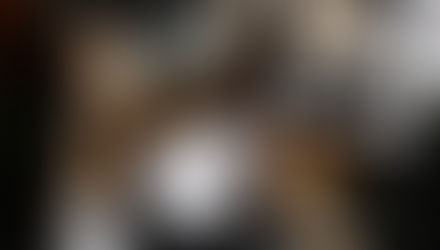Tips for a Great Front Cover
- Esjay C. Moore

- Nov 30, 2017
- 6 min read
Your writing is completed! (At least for THIS future bestseller!) While you are waiting patiently for feedback from your editor, why not consider your cover! When it comes to books, the first impression usually matters, especially when your book is neatly perched on a shelf next to another 100 plus books of a similar genre to yours.

Remember the adage: "Do not judge a book by the cover!" - unfortunately, it is exactly what browsers tend to do when looking for a new 'read'. It is human nature to focus on visual images or colours that appeal to us, and although a great cover may not leap you into #1 position, a bad cover will likely not get your book picked up to begin with! If you are a 'yet to be discovered author' having a book that really catches the eye is imperative to being noticed.
Before you begin, I might warn you that designing a cover is a big project, therefore if you have the funds, or lack the creative expertise, PLEASE use a professional.
1. UNDERSTAND YOUR BOOK
I know you are thinking: "I wrote the story, of course I understand it!" Fair enough, but I am talking beyond the plot, setting and characters. Think of the overall emotion you want your readers to experience, the depth of the protagonist. Try not to be to literal, in other words don't lift a scenario straight from the story and put it on the cover. This is very much how older covers were designed. In this day and age, designers tend to be more symbolic, creating intrigue through clever understanding of the content. Your cover should not explain the entire story in one look, but should encourage the browser to want to know more.
Of course, there are instances where more literal book design is more suited such as children's books and light romance, but for the most part you want to draw your readers in to the mystery inside.
2. CLEVER SYMBOLISM

Here is one book that jumps at me with its simple yet highly symbolic style.
We can immediately tell that the man has multiple marriages which have put a 'squeeze' on his life.
The potential reader would perhaps like to know would bring someone to have multiple wives, what type of strain he is under (relationship, financial) and why he would still find himself being lonely.
3. DEPICT YOUR GENRE WITH ACCURACY
Your book will be placed in the book store according to a genre. Consider a roadtrip to do a little research. Visit the relevant section in your local book store to see what stands out. Chances are most books will be similar in colours and font design, this is because people looking for a particular genre, let's say 'crime thrillers' are not going to relate to flowery pastels and pretty scripted text usually reserved for romance novels. No! They want bold text with an ominous design possibly in black, blues, greys and reds! I would suggest staying in the same confines of the genre, but find something more unique to your book. Even under the same general genre your book might be more specific. Consider the impression that these three 'Romance' book covers below make.

The first is somewhat saucy/sexy, second appears to be a sweet true love romance, while the third depicts a story that is somewhat more serious. Consider what makes it so. The picture, the type of font, the colours. For a browser the cover would immediately tell them the type of content they should expect.
4. FONTS and STYLE
Your cover should have at the very least your title and your name. Additionally it may contain a sub-title, the series title, and an award notice. Do not overcrowd your cover with text and try to vary the style and size of the font used to create interest. Remember your title and name should be the most noticeable. Although having too many font styles can be distracting it is worth while experimenting with font size, font weight (eg. boldness), positioning (vertical, horizontal and even slanted) and of course, the colour until your find the combination that helps your cover 'pop'.

The font style should suit your content and audience. After all, a whimsical font won't suit a novel of espionage and intrigue. Dr. Seuss uses an easy to read font with simple words.
Try colours that contrast each other but remember to keep your title and name clean and legible. In this Dr. Seuss favourite he uses a simple colour scheme with bold legible font, while his name is written in a more fun style.
Create bold contrast to help your cover stand out. When using a photographic image as the backdrop this can be a little tricky. You would need to learn how to use tricks of shading, embossing, outlining your font.
5. USING PHOTOS/IMAGES/PICTURES
First off, do not go using images you simple like on internet or in a book. Very often these are subject to the artist/photographer copyright and you will be infringing on their rights. If you are looking for images and do not wish to commission someone to do the work for you, then try stock images. These are pictures for which you can purchase the right to use, for a very menial price. Try some of these site suggestions:
www.bigstock.com
www.shutterstock.com
www.123rf.com
or else just google stock images. Some of these sites allow you a few days of free images, but you have to sign up for a subscription which will kick in after 'X' number of days. Be sure to cancel your subscription before they actually start charging you!
Remember your image should be relevant to your story and should also match your font(s).
When you planning to create a set of books within the same series, you should try to match the books with a common thread. Although it is very unlikely you can use the same image for each book in the series, you might consider an object or shape, or at the very least the same style of image (eg. if cartoonish, stick with that). There are other ways to create the continuity. J.K. Rowling tended to use the same font style for her "Harry Potter" books, and Stephenie Meyer used the same eye catching red, black and white for her cover design of the "Twilight" series.
6. DESIGN SOFTWARE
Now there are countless software programmes available to do this task of designing. Some are more general design application, which will require you to have a great command of design and the programme to create an effective cover. Be aware that anything offered as FREE is likely to be limited in capability.
ADVANCED: In general these are Desktop Publishing applications which allow for designers free range to create their own designs from scratch. Think: Adobe InDesign, CorelDraw, Serif PagePlus, etc. You can create your own cover template, import the template you have downloaded (I would suggest this option) or use one of the built-in templates. You will require to have extensive knowledge of layering, font manipulation, transparency techniques, etc. to make stand out designs.
NOVICE: These are programmes that are specifically designed for book cover designers in that that have editable professional templates, but you can also design from a blank canvas. The software works from your desktop. Think: BookCreative, MyEcoverMaker.
BEGINNER: Online platforms like Amazon, Createspace, provide FREE online templates which you can customise colours, font style and place your own image. To be fair this option is great for beginners especially since it is 100% free, but be forewarned that others are using the same general templates so your book may very well have a similar appearance to someone else's.
7. USING TEMPLATES

Personally I would recommend using the templates offered by the Online platforms. They are simple to use and guarantee that your cover design is in accordance with their acceptable parameters. In general you key in your book specifics such as size, number of pages, type of paper and within minutes you will receive an email with your template. Your template will look similar to this image on the right.
Having read the above tips, you may second guess your ability to design a cover. I say give it a shot! If it looks like a 5 year-old designed it then try again. If you still fail you can either pay a professional to design a professional cover, or your can use the free option provided on the various online platforms.

You might ask how I came to use the cover I did for THE BLESSING OF QUEEN.
* We can see that the story is of a young African woman
* surrounded by opulence (feather boa)
* lost in a superficial world (hence no eyes to represent her soul)
* "Queen" is written cursively to denote femininity
* the orange is vibrant, and pops against the black.
Although your cover design must 'pop' to be noticed on the shelf in the local bookstore, you should also remember that many readers buy online, so remember to always look at the THUMBNAIL size of your cover. It is important that the TITLE, AUTHOR NAME and GRAPHIC ENTITY are clearly seen.
IN SUMMARY:
* Understand what makes your story unique.
* Use symbolism to SHOW your story and not so much TELL.
* The cover should relate to the story.
* Use graphics from a legitimate source.
* The text for the Title and Author name should be most prominent.
* The scheme should be relevant to the genre (font, colours, style, design entities).
* Decide on your capability to know which software type to use.
* Use a template for accuracy.
* Check the thumbnail image.
I hope you have learnt some tips on cover design. If you enjoyed this post please share and remember to sign up to receive updates.
with love and light

















Comments